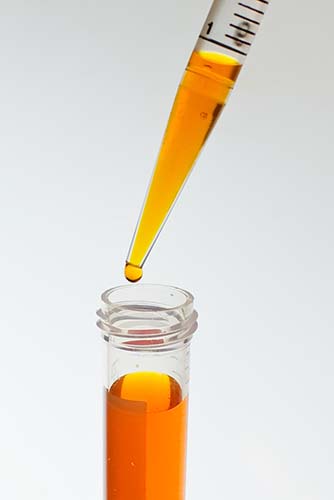Oil Analysis
Oil condition monitoring is about improving profits through reduction of costs, increased uptime and reduced unplanned downtime. It provides an insight into how your machinery is performing. We provide expertise, guidance and support to help you get the most out of your equipment.
Oil Analysis
 There are 4 main maintenance strategies that a business may choose to use. These include:
There are 4 main maintenance strategies that a business may choose to use. These include:
Reactive – run the equipment to failure / fault. There are few circumstances where this is a viable option, but only valid when components are cheap and quick to replace or the equipment is not critical.
Preventative – replacing components or changing oil at set intervals. This is better than Reactive as it uses statistics to predict when equipment typically fails or when oil typically comes to the end of its life and the operator makes the replacement before this period. The disadvantage with this system is it does not take into consideration the true condition of the machinery or oil. This leads to oil and components being replaced too early and can be very wasteful. More importantly, it does not identify the machinery that will fail earlier than statistically predicted, nor does it identify the cause of any wear taking place.
Predictive – analysing the unit for abnormal wear processes. This can be done by oil analysis as well as other none destructive testing methods such as vibration, thermography and Acoustics. Oil analysis can identify different components wearing abnormally because different parts of the system are made of different metal alloys, each with its distinctive signature. This maintenance strategy can identify evidence of wear in a unit, such as piston wear in an engine or gear teeth wear in gearbox, and can allow repair work to be carried out before a failure occurs. This does not identify why the failure/fault happened in the first place.
Proactive – This is what sets oil analysis apart from the other predictive maintenance strategies because it is both predictive and proactive, identifying the root cause of the problem before the onset of wear. For example the machinery may also show evidence of dirt ingress, which can be detected and identified as a fault with the air induction system / seals. Our proactive and predictive programme identifies the root cause and allows you to correct this at a planned and convenient point.
Thermal Imaging
Industry now commonly accepts that PPM (Planned Preventative Maintenance) plays a huge role in reducing costs, both in shut down losses and material replacement.
In order to diagnose some electrical faults items such as switchgear and panels may have to be shut down and this not only causes a loss in production but can also hide the fault you are trying to locate.

Benefits
- Non-invasive procedure
- Preventative fault finding that is otherwise unseen
- Cost effective maintenance
- No downtime
Insurance companies are now increasingly insisting on annual thermal survey reports to satisfy policy criteria.
We can supply a full report complete with infra-red pictures and digital comparative pictures, detailed technical information and remedial works required.
Oil analysis monitors your machinery health to give you
confidence to act. In each case the machinery represents a significant
investment and is often critical that it remains operational. Failure of
the machinery can result in loss of production, with costs sometimes at
thousands of pounds an hour. If your business was suddenly unable to
provide its services or manufacture its product, imagine the damage it
could do to your business and your customers’ confidence in you to
deliver on time
For all enquiries, please call us on 0161 236 2300
